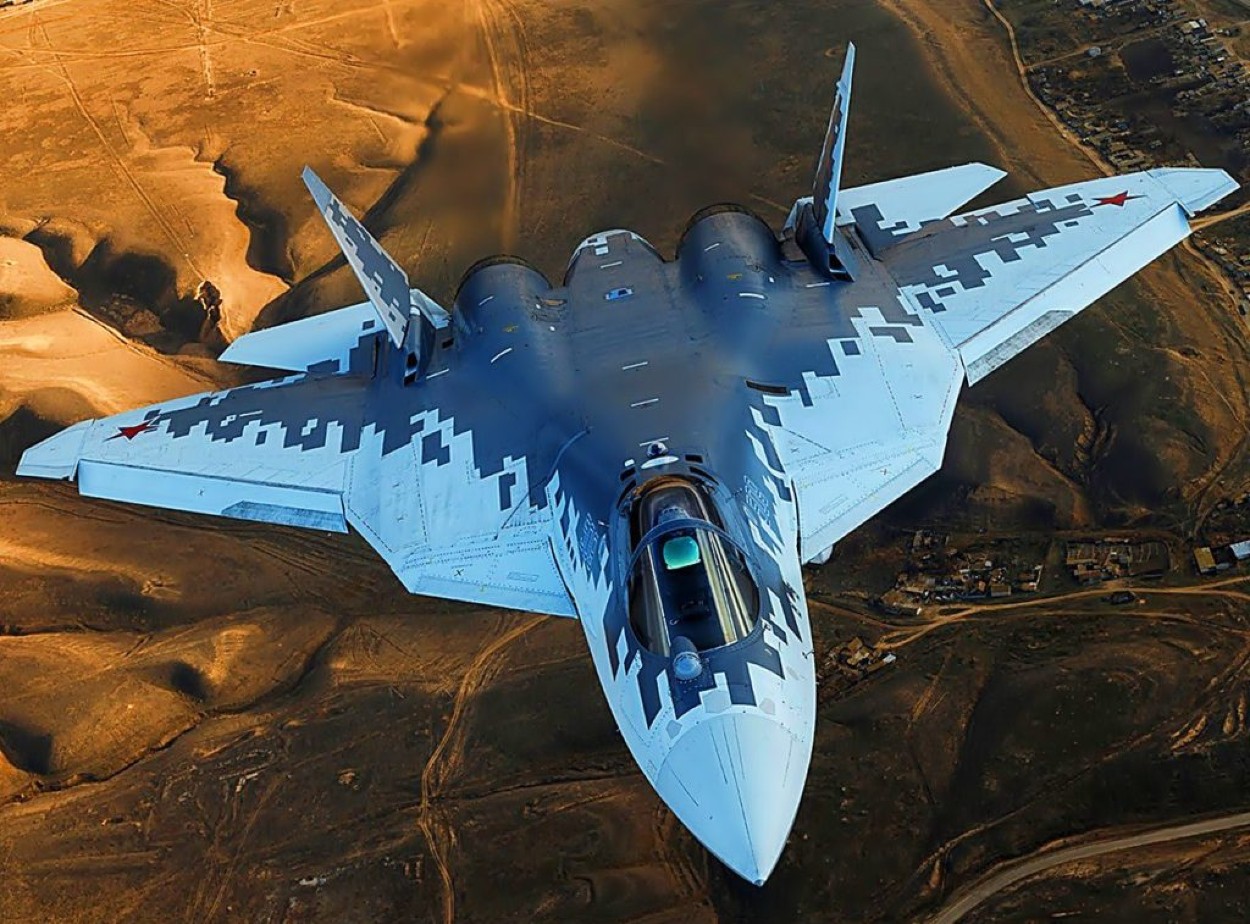Despite facing severe Western sanctions and being occupied in the ongoing conflict in Ukraine, Russia appears committed to enhance the capabilities of its fifth-generation Su-57 stealth fighter jet.
Led By Tu-95MS Bombers, Russia Conducts Massive ‘Wave Attack’ On Su-24MR Airbase To Tame Ukraine
On August 7, a Russian state-owned news agency TASS claimed that the fifth-generation multirole fighter Su-57 had been outfitted with a new digital communication system.
The report, citing the press service of the holding company “Ruselectronics,” a subsidiary of Rostec, stated that the advanced Su-57 fighter had been equipped with an advanced onboard digital communications complex.
This significant upgrade is anticipated to substantially improve the transmission quality of critical information during its operations.
“The complex of the communications equipment of the promising multifunctional fighter Su-57, developed by the NPP Polet, which is part of Ruselectronics, has been introduced into aircraft,” the company said.
Furthermore, the company highlighted that the new communications complex holds the potential for future use in various aircraft, including those from previous generations.
The system, crafted by experts at NPP Polet (a division of Ruselectronics), operates effectively in both “high and very high-frequency ranges,” boasting heightened noise and intelligence protection capabilities.
With its noise-resistant coding and interleaving of characters in messages, the equipment ensures robust and reliable information transmission.
Additionally, unified time synchronization during signal processing enables the simultaneous transmission of messages through parallel channels, substantially improving the range of stable communication.
The complex also features noise-resistant coding and decoding devices, a receiver designed for global navigation satellite systems signals, and a digital signal processing and synchronization bus.
These advancements will collectively contribute to the system’s exceptional performance and potential for wide-ranging use across aircraft.
Russia’s Efforts To Enhance Su-57
Su-57 is the only operational fifth-generation aircraft in the Russian Air Force fleet. While Moscow is also engaged in developing the Su-75 single-engine aircraft, the project is still in its early conceptual stage, and it is anticipated to take several years before it transitions into a fully operational platform.
Consequently, it becomes imperative for Moscow to advance the capabilities of its Su-57 stealth aircraft to counter contemporary threats, especially considering that several European nations are currently operating or planning to deploy the US-made F-35 stealth aircraft.
Over the past few months, the Russian defense industry has released many updates regarding its endeavors to incorporate advanced technology into aircraft.
In April 2023, Rostec, a state-owned corporation in Russia, announced the development of an artificial intelligence-enabled communication system specifically designed for their fifth-generation Su-57 stealth aircraft.
This system was intended to enhance the efficiency and effectiveness of information exchange between aircraft and ground complexes.
There is a strong likelihood that the AI-powered communication system, which was previously reported to be under development, is now integrated into the Su-57 stealth aircraft due to the alignment of described features.
In addition to the communication system, it was reported in February that Russia’s Su-57 Felon fighter jet would receive upgraded landing gear utilizing 3D printing technology. This upgrade aims to reduce both cost and weight.
The new landing gear for the Felon is said to be constructed using aluminum and incorporates an advanced computer-designed architecture.
Furthermore, on August 4, Moscow claimed to have developed a new short-range missile named the RVV-MD2 for the Russian Su-57 aircraft.
Notably, this cutting-edge missile is projected to possess a technological advantage over any comparable counterparts the United States might develop, estimated to be ahead by five to ten years. Efforts to integrate this advanced missile into the Su-57 have already been set in motion.
Dmitry Kornev, the editor of the MilitaryRussia portal, told Izvestia that the RVV-MD2 missile incorporates gas-dynamic rudders alongside aerodynamic control surfaces, granting it exceptional maneuverability.

With four gas-dynamic shields near the engine, this unique design allows the missile to withstand high overloads, making it capable of attacking maneuvering targets at varying speeds. Notably, the Su-57 can employ this advanced weapon in close air combat.
An essential feature of the RVV-MD2 missile is its radio correction line, allowing the aircraft to refine the target’s coordinates precisely.
This enhancement is vital in significantly increasing the probability of effectively engaging and hitting enemy aircraft during combat scenarios.
Nevertheless, the Russian defense industry persistently pursues incorporating advanced features into the Su-57.
But, the extent to which Western sanctions may pose challenges or push back these efforts remains to be seen, adding a degree of uncertainty to the future trajectory of the program.
- Contact the author at ashishmichel(at)gmail.com
- Follow EurAsian Times on Google News